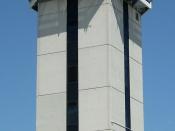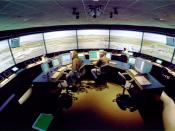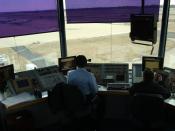Nearly all air traffic controllers are employed by the Federal Aviation Administration (FAA), an agency of the Federal Government.
Replacement needs will account for most job openings, reflecting the large number of air traffic controllers who will be eligible to retire over the next decade.
Competition to get into FAA training programs is expected to remain keen; however, graduates of these programs have good job prospects.
Air traffic controllers earn relatively high pay and have good benefits.
The air traffic control system is a vast network of people and equipment that ensures the safe operation of commercial and private aircraft. Air traffic controllers coordinate the movement of air traffic to make certain that planes stay a safe distance apart. Their immediate concern is safety, but controllers also must direct planes efficiently to minimize delays. Some regulate airport traffic through designated airspaces; others regulate airport arrivals and departures.
Although airport tower controllers or terminal controllers watch over all planes traveling through the airport's airspace, their main responsibility is to organize the flow of aircraft into and out of the airport.
Relying on radar and visual observation, they closely monitor each plane to ensure a safe distance between all aircraft and to guide pilots between the hangar or ramp and the end of the airport's airspace. In addition, controllers keep pilots informed about changes in weather conditions such as wind shear, a sudden change in the velocity or direction of the wind that can cause the pilot to lose control of the aircraft.
During arrival or departure, several controllers direct each plane. As a plane approaches an airport, the pilot radios ahead to inform the terminal of the plane's presence. The controller in the radar room, just beneath the control tower, has a copy of the plane's flight plan and already...


